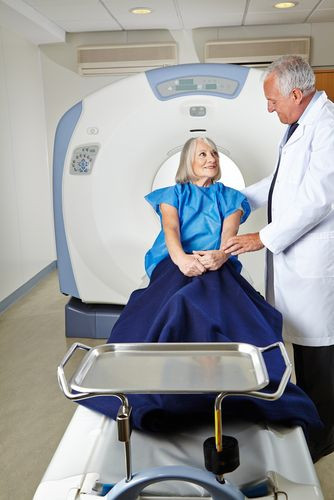Experimental Radiation Therapy For Breast Cancer Provides More Convenience And Lowered Costs After Lumpectomy

Breast cancer oncologists have recently devised a regimen that involves only once-weekly breast radiation following lumpectomy, instead of the standard practice of daily radiation. The interim results of the five-year Phase 2 clinical trial using the experimental regimen shows better completion results at lower costs and the same cosmetic results as daily radiation therapy.
These results are being presented at the Breast Cancer Symposium 2014 in San Francisco by Dr. Anthony E. Dragun, vice chair and associate professor of radiation oncology at the University of Louisville (UofL), on Thursday. The experimental regimen was launched three years ago by Dragun at the University of Louisville, James Graham Brown Cancer Center, a part of KentuckyOne Health and the only site offering the experimental regimen in the United States.
Picking up on the successful implementation of the once-weekly radiation used by doctors in the United Kingdom and Canada, Dragun decided to check its feasibility on breast cancer patients here in the U.S. Traditionally, American doctors have favored the standard regimen of small daily radiation doses after lumpectomy for cancer control. But day-to-day radiation for a period of six to seven weeks can cause great inconvenience to the patients with regard to the associated costs.
"Instead of daily treatments for 25-30 days, five to six treatments administered once each week were being used," Dragun said in a statement. "I thought this regimen would give our patients here in Kentucky a great deal of access and choice, so we developed the trial and launched it in 2011."
Around 150 breast cancer patients have enrolled for the experiment so far, he said. Patients undergoing lumpectomy are given a choice of following the once-weekly radiation treatment or the standard daily radiation treatment. Certain changes were made to the radiation doses given in the once-weekly treatment, but this in no way changed the outcome of the therapy. "The outcomes with once-weekly treatments are absolutely in line with what we see in daily breast irradiation," he said. "The standard of care is maintained."
Women who cannot commit to daily treatments are more incentivized to complete their once-a-week radiation therapy. "Finding time for daily treatments for six weeks or more just isn't possible for many women," Dragun said. "Scheduling once-weekly treatments is much easier to fit into the busy lives our patients lead.”
This experiment has also been widely appreciated by patients living in rural areas who have to travel miles to get to their treatment centers. According to Dragun, many such patients had considered getting mastectomies since they couldn’t commit to a traditional course of daily radiation treatment.
This new regimen reduces the total treatment time by about one-fourth to one-third of the current daily-treatment. Since insurers reimburse on a per-radiation basis, this regimen also lowers costs. "Medicare reimburses radiation costs on a per-treatment basis, and most private insurers do likewise. This means we've been able to reduce the cost by 50 to 60 percent without jeopardizing the quality of care,” Dragun said.
Dragun believes that the once-weekly therapy will be widely adopted by oncologists in the coming years, as its benefits far outweigh those of traditional radiation treatment.
Source: Dragun A et al. A phase 2 trial of once-weekly hypofractionated breast irradiation: Interim analysis of cosmetic outcome and quality of life. Breast Cancer Symposium. 2014.
Published by Medicaldaily.com



























